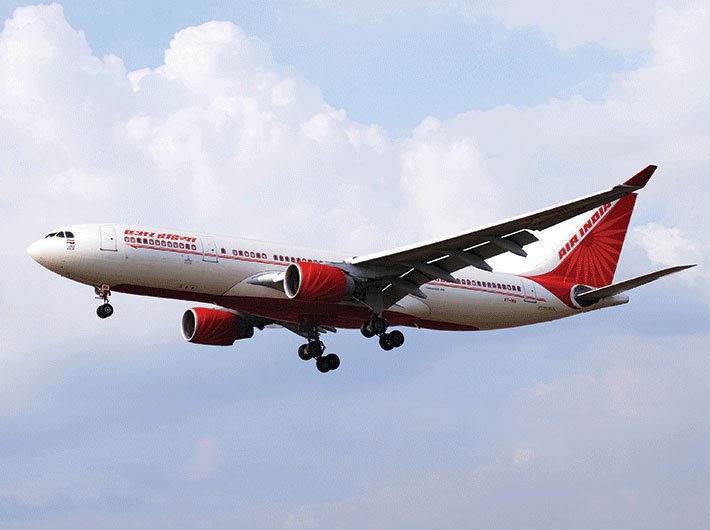The government aims to boost air travel between smaller cities. Attracting passengers will be a tough task
Come January 2017, and you will be able to fly from Jamnagar to Ahmedabad or Allahabad to Gorakhpur… or so claims the government. The Modi government’s ambitious regional connectivity scheme (RCS) promises convenient travel between state capitals and remote regional areas, efficient business and trade opportunities, and profitability for under-served and unserved airports.
While launching the scheme, titled UDAN (Ude Desh Ka Aam Naagrik), on October 21, civil aviation minister A Gajapathi Raju said, “UDAN is the result of the prime minister’s vision of getting ‘every hawai chappal wearing Indian to board a hawai jahaz’. We are cautiously optimistic about it.”
But can a country like India, where regional airlines have never really flourished, give wings to the aam aadmi in his hawai chappals?
All said and done, it comes as a surprise that neither the Airports Authority of India (AAI) – the implementing agency for the scheme – nor the “interested” airline companies have conducted surveys to find out how many passengers are likely to take these flights and how much they will be able to afford.
The implementation of the regional air connectivity scheme depends a lot on the volume of passengers. In the past, airports in Kanpur and Jaisalmer suffered losses because there weren’t enough passengers to make them profitable. “The AAI has not done a survey. The onus of conducting this survey lies on the airlines as they have to transport passengers. It is a demand-based scheme. They will have to do the demand survey,” said a high-ranking official in AAI who requested not be named.
There are as many as 17 under-served airports in the country that receive only seven flights a week. And there are as many as 407 ghost airports, which have not seen a single flight in the last schedule. These airports hope to improve their flight activity with UDAN. “The AAI currently has 125 airports, of which only 10 are considered profitable. We have decided to do cross-subsidising, in which we can use a chunk of amount for developing RCS airports,” said GK Chaukiyal, executive director, project monitoring and quality assurance, AAI.
While the scheme’s larger interest and intent are noble, there are some gaps that cannot be ignored. For instance, lack of proper financial planning. Under the scheme, a regional connectivity fund (RCF) would be created for the viable gap funding (VGF) requirements. It would be funded through a levy on certain domestic flights. Also, the partner state governments (other than of the northeastern states and Union Territories) would contribute a share of 20 percent to this fund. But AAI officials are apprehensive about the states’ financial contribution.
“They have promised to give 20 percent funding, but what if they don’t do so in future? Then, we will have to pay the airlines. As the implementing agency, the onus would be on us to pay the required 20 percent of the VGF. There is a lot of economic burden on the AAI,” said the AAI official who spoke on condition of anonymity. “In the short run, we are a loser. We are anyway not a profit-making organisation,” he added. Moreover, as soon as the RCS airports will become functional, they will generate at least six times more employment opportunities and the salaries will be paid by the AAI, an additional burden on the authority.
Chaukiyal feels that though the RCF would create a sum of Rs 400 crore in a year, which will be spread across north, east, west, south and northeast regions, the AAI will not benefit from it. “We will only get some administrative charges, which will be a meagre amount. It will hardly make any difference to us,” he said.
Meanwhile, the Federation of Indian Airlines (FIA) has moved the Delhi High Court challenging the government’s proposal to levy between Rs 7,500 and Rs 8,500 per flight on Indian operators for developing regional airports. Terming the levy as “illegal”, the FIA – which represents IndiGo, Jet Airways, SpiceJet and GoAir – has written to the civil aviation ministry and said that the government is not empowered to levy such a tax under the Aircraft Act, 1934.
Regional connectivity was one of the promises made by the BJP in its election manifesto. “In a first-of-its-kind effort, the operating cost has been reduced in many ways. First, UDAN reduces taxes on aviation turbine fuel (ATF) and eliminates airport charges completely for UDAN routes. Second, the landing charges and parking charges on airports have been waived. Thirdly, the airfare has been fixed at Rs 2,500 for one-hour flights covering a distance of about 476-500 km,” said Pramod Mishra, executive director, air traffic management at AAI.
But so far only 11 states have signed the memorandum of understanding (MoU) on RCS-UDAN, according to the scheme. Seven states have given consent to sign the MoU, while 10 are yet to give their nod, even as the scheme promises that the first flight would take off in January 2017. The states that haven’t given approval to the scheme are the big ones like Uttar Pradesh, Bihar, Punjab, Kerala and Karnataka. It is pertinent to note that their lack of interest in the RCS could obstruct its success in these states.
There are four stakeholders in the scheme – the central government, state governments, airport authorities and airlines. Sources in the AAI say that a meeting of stakeholders was held on November 4, at which some objections were raised. The RCS scheme mentions that the selected airline operator will have to provide a minimum of nine and a maximum of 40 RCS seats on the RCS flights for operations through fixed wing aircraft. VGF will be provided for only 50 percent seats of an aircraft and for minimum three to seven flights a week. Firstly, airline companies have objected, saying they should be allowed to decide on the number of flights per week; they would ensure that the 280 seats per week requirement was met. Secondly, providing the maximum number of RCS seats on a flight (40) would call for using 80-seat aircraft, which only a few airlines such as Air India, Jet Airways and SpiceJet have. Those having these aircraft have argued that operating smaller aircraft is an expensive affair and would not be viable.
Suggesting modifications in the scheme, a few stakeholders have said that the current operation costs are sky-high and have demanded a greater share than 20 percent from the states and the centre. They feel that while the subsidy element has been clearly mentioned in the scheme, flight on RCS routes won’t be feasible. Till now, airline operators have not benefited from airline activities in regional areas.
Air Pegasus, a southern regional carrier, cancelled its flights indefinitely after incurring huge losses and failing to pay lease rentals to the aircraft lessors. The directorate general of civil aviation has even suspended the flying licence of the carrier.
Business airline operators, who use smaller aircraft, are unhappy at not being included in the Udan scheme. They say it’s unlikely to succeed without their participation because small aircraft hold the key to regional success.
Another bone of contention is the bank guarantee clause. Under the scheme, if any airport requires more than Rs 50 crore investment for its expansion, aircraft owners are supposed to pay a bank guarantee of Rs 1 crore to the airport operator for a period of one year. However, airlines have refused to agree to this condition. “As a government agency, we need this bank guarantee, otherwise we will be questioned by the higher authorities. What if we do the construction and extend the airport and the airlines withdraw their contract?” said Chaukiyal.
Indian passengers have taken to preferring flights over premium trains after the introduction of the flexi-fare scheme by Indian Railways. Therefore, there is no denying that Indians will be flying more, but it is still a question whether UDAN will attract passengers travelling between remote areas, or it will remain a flight of fancy.
[email protected]
(The interview appears in the December 16-31, 2016 issue)



